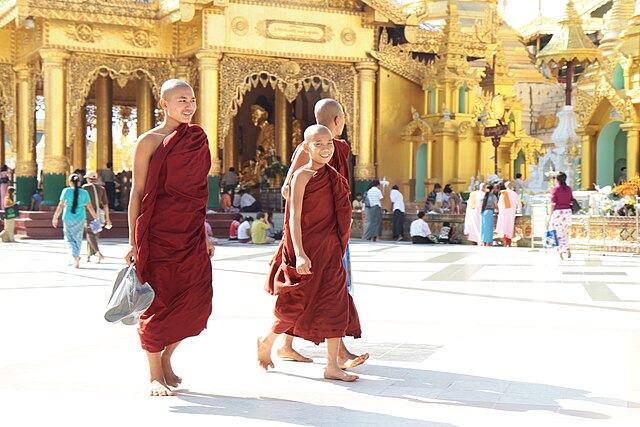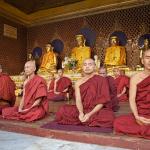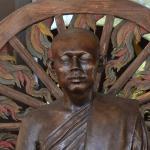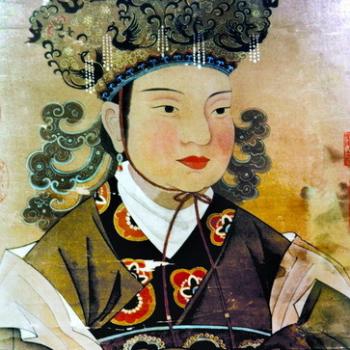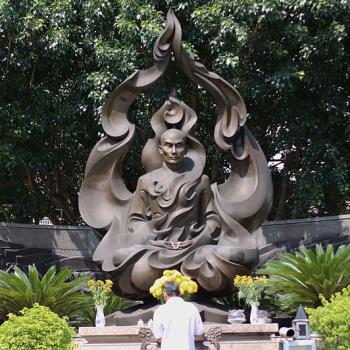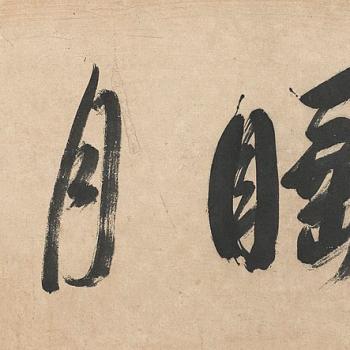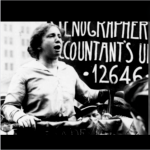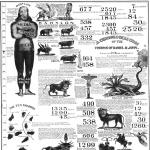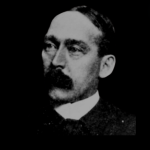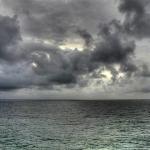U Dhammaloka (1856–1914, maybe) was (possibly) the first westerner to become an ordained Buddhist monk. Parts of his biography are a mystery, but what can be pieced together makes quite a story. And it’s a story told in a book titled The Irish Buddhist: The Forgotten Monk who Faced Down the British Empire by Alicia Turner, Laurence Cox, and Brian Bocking (Oxford University Press, 2020).
The authors’ painstaking work to document U Dhammaloka’s life story was complicated by his practice of using multiple aliases and telling conflicting stories about himself. He was, probably, originally Laurence Carroll, born in County Dublin in 1856. He left school at about age 13 and made his way to Liverpool, where he found work in a ship’s pantry. He arrived in New York in 1872, and for a time he worked on cargo ships along the U.S. east coast. But then he headed west, jumping trains and taking migrant jobs where he found them. In San Francisco he got work on a trans-Pacific ship, and eventually he came to Rangoon, Burma (today’s Yangon, Myanmar). He probably arrived in Burma in the late 1870s or early 1880s.
U Dhammaloka: The Buddhist Monk
Laurence Carroll lingered in Rangoon. He worked on the docks. He clerked for a logging company. He learned the local languages. And in about 1884, he was ordained as a novice Buddhist monk, taking the name Dhammaloka, “realm of the dhamma.” Dhamma (dharma in Sanskrit) is a Pali word that can refer to the teachings of the Buddha, but it connotes a great many other things as well.
When Carroll first reached Burma, the British Empire had already claimed the southern part of the country, which included Rangoon. In 1885 British troops overwhelmed the northern part of Burma and deposed the King, an event touched on in the last post. After 1885 all of Burma was part of the British Raj as a province of India. It’s not hard to imagine that this affected the Irish monk deeply. He had traveled to the other side of the world and was still witnessing the spread of British occupation.
Exactly when Dhammaloka was fully ordained is not certain; it may have been before 1899. He received authority to teach, probably in the Tavoy monastery in Rangoon. By 1900 he had gained enough seniority he was able to travel and preach throughout Burma. And what he preached was Buddhism mixed with anti-colonialism.
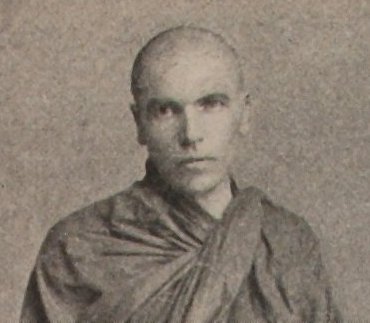
U Dhammaloka: The Activist
The Shwedagon Pagoda in Rangoon/Yangon is the most sacred place in Buddhist Myanmar. The huge gold-plated pagoda is believed to hold relics of the Buddha. The Pagoda is surrounded by other structures — temples, shrines, statues, bells — in an area covering more than 46 hectares or 114 acres. The entire area is considered a sacred space, where people are not to wear shoes. During a special observance day in 1901, Dhammaloka confronted an off-duty colonial policeman, an ethnic Indian, and ordered him to remove his shoes. This might seem a small thing, but in that time and place Dhammaloka’s order was a gutsy act of civil disobedience. The “locals” removed their shoes in Buddhist sacred places, but White people and representatives of the Empire — such as Indian police officers — did not. To do so would have meant “lowering” themselves to the level of the ruled masses.
Dhammaloka wasn’t having it. Perhaps he saw the parallels between the treatment of Buddhists in Burma and Catholics in Ireland. For the next several years he became an anticolonial campaigner, and not just in Burma. He traveled to Sri Lanka, India, Bangladesh, Burma, Malaysia, Singapore, Thailand, Japan, and Australia, speaking to large crowds. He warned them that colonialism came with “the Bible, the whiskey bottle and the Gatling gun.” He became an anticolonial celebrity. He also helped connect networks of activists throughout Asia and made a real contribution to the organizing that eventually swept away the Empire.
In 1910, on the complaints of two Christian missionaries who thought him disrespectful of Christianity, Dhammaloka was charged in Burma with sedition, and convicted. He appealed to a court in Rangoon. On the day of his hearing, the streets were filled with his supporters. The Empire blinked, realizing that punishing Dhammaloka might spark a larger insurrection. He was put on a year’s probation, on a large bond provided by his supporters. When the year ended, he left Burma for the last time and sailed for Australia.
The Story’s End
Word came from Melbourne that Dhammaloka had died, and his obituary was published around the world. But then he reappeared, alive, in Singapore and Thailand, and a few other places. But early in 1914 he simply disappeared. It is presumed he died, somehow, but no one knows.
